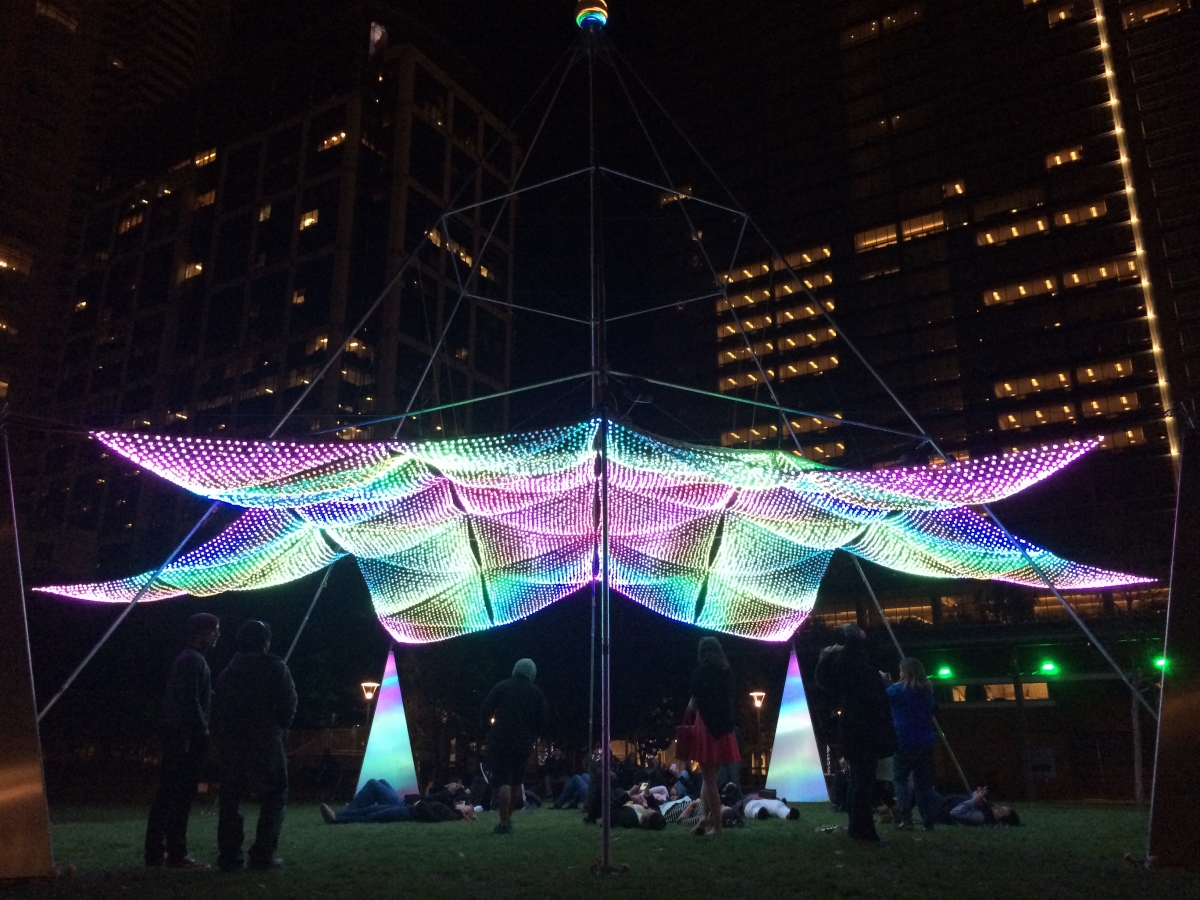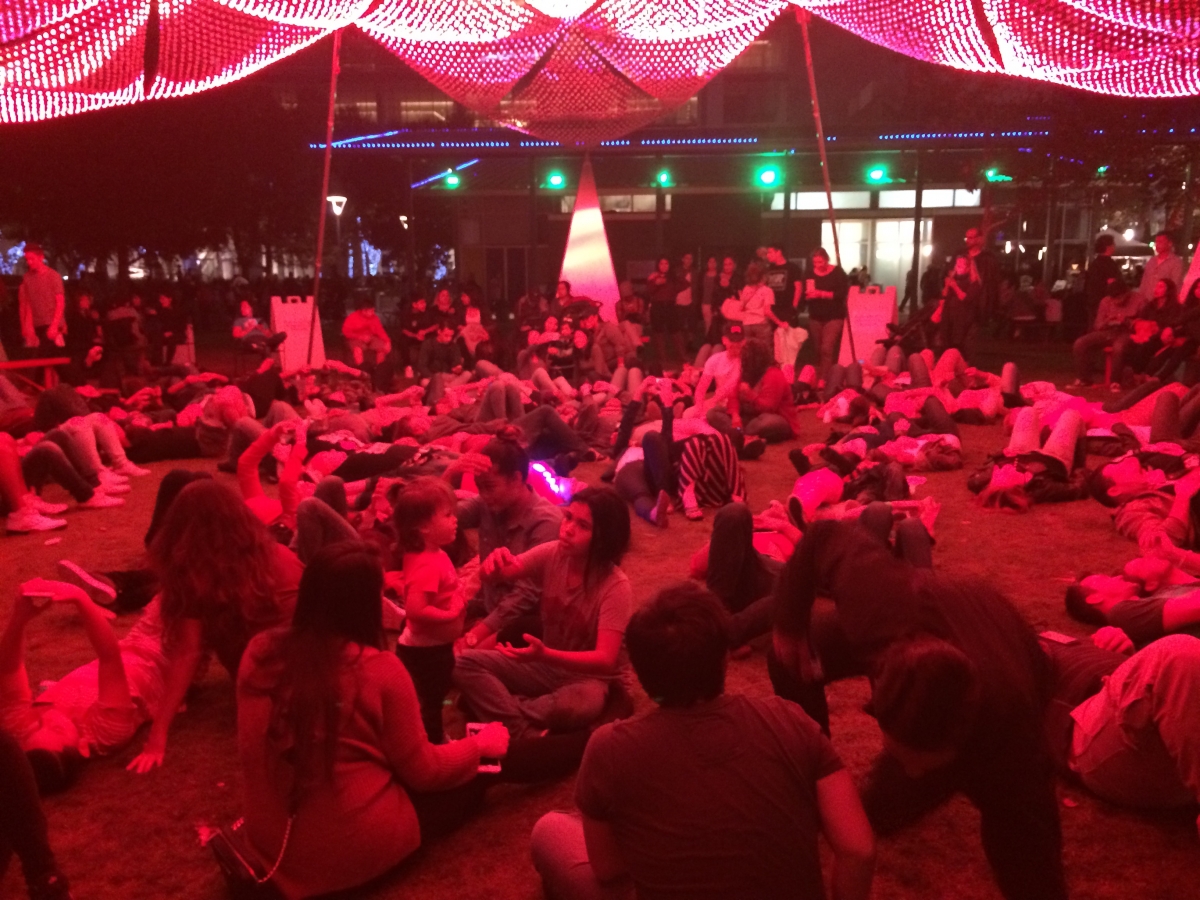The Story of Firmament
Posted by Aug 16, 2017

Christopher Schardt
This post is part of our Public Art Network 2017 Year in Review blog salon.
Firmament began as a tech-tricky idea: What if you had a ceiling of LEDs interwoven with motion sensors, so that when a person walked underneath it, an avatar image would appear above him/her, and track his/her movements around the space? When avatars met, there could be some sort of entertaining animation—an explosion, radiating circles, melting ...
I started working on this piece, then called Light Ceiling or something horrible like that. As I got into it, I discovered that the state of motion sensors is quite primitive. It would be very hard to make it work, and very expensive if it worked at all.
This was my biggest lesson from creating Firmament—that being clever and pretty is great, but it doesn’t work nearly as well as a place and space for people to really enjoy the moment.
Then I took a hike with my father Max, a landscape architect. I described what I was making. He listened for a good while and then interrupted me, as he does: “You know, I think you’ve really got something here, but it’s different from what you think. With this canopy of LEDs, you could be displaying planets, stars, moons, nebulae, aurora borealis, the entire firmament!”
In that moment, I changed my focus, and got the name of the piece. What I ended up with is a canopy of 21,600 LED modules in a triangular grid, forming a hexagram 52 feet in diameter over a park in downtown Houston. Each module is individually controlled by an iPad app called LED Lab. Images of any kind can be displayed, including video feed from the iPad camera.
I knew I wanted music to be part of this “show.” My first thought was to use ambient electronic music. But as the piece came together, I wondered if that wasn’t quite right. I thought that maybe classical music would be nice. I didn’t know for sure until I erected the piece the first time. The classical music completely fit the vibe that my father described, and it’s become a key part of the Firmament experience.
Yes, Firmament is an experience. It’s not something you come up to look at and say, “oh, how clever” (as the case with many LED pieces). It’s a place where you go, and sometimes stay. It’s an environment that draws you in and gives you a comfy spot to be. This was my biggest lesson from creating Firmament—that being clever and pretty is great, but it doesn’t work nearly as well as a place and space for people to really enjoy the moment.







